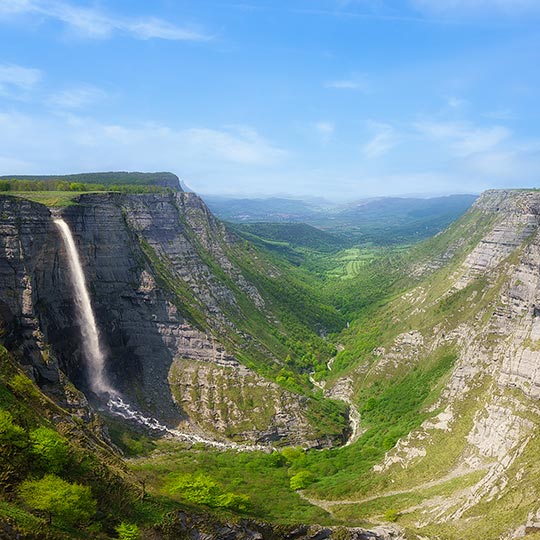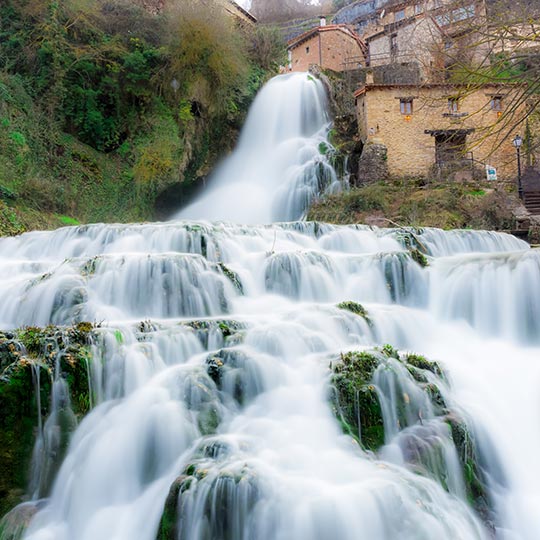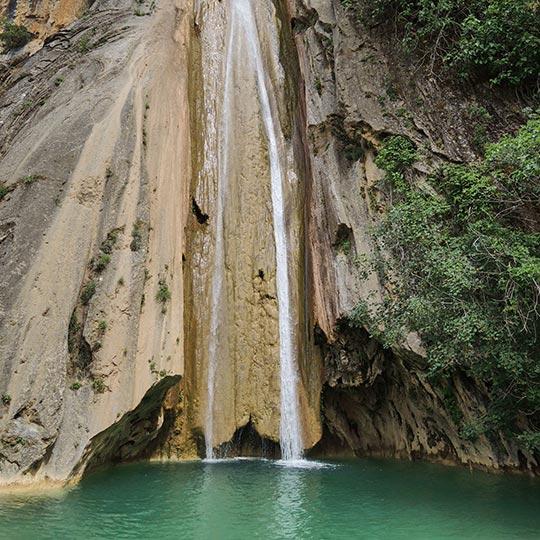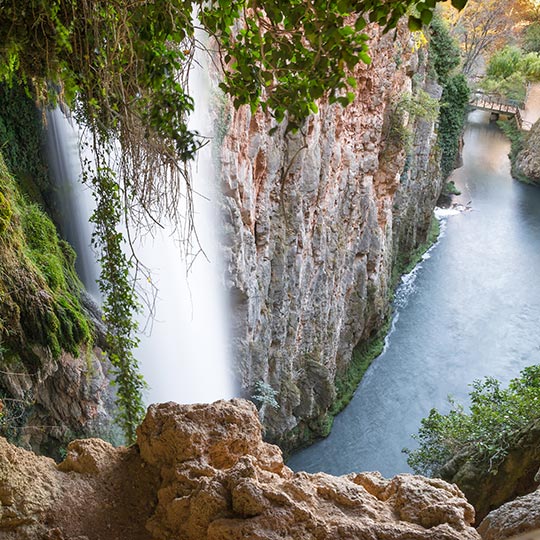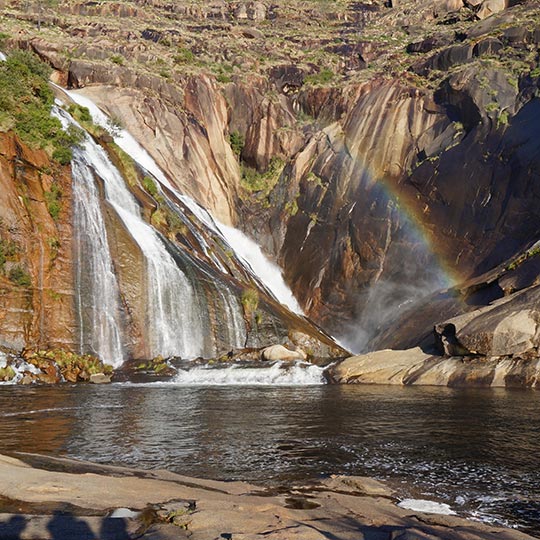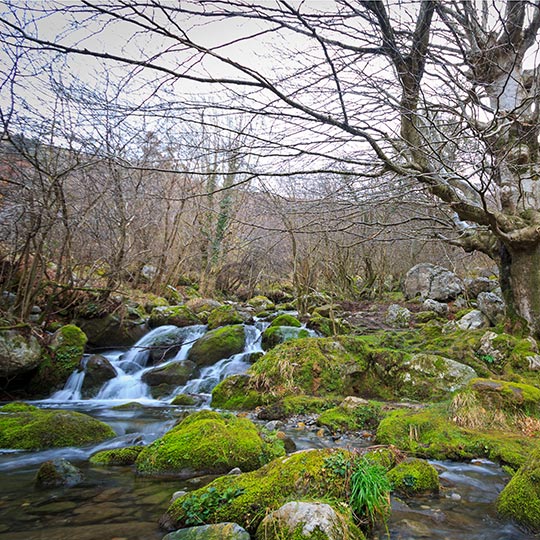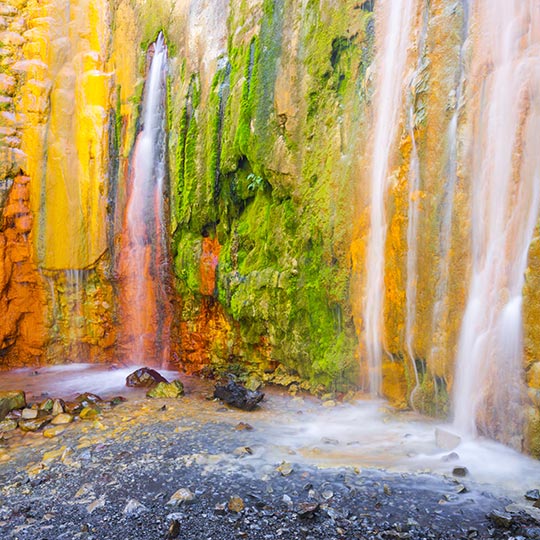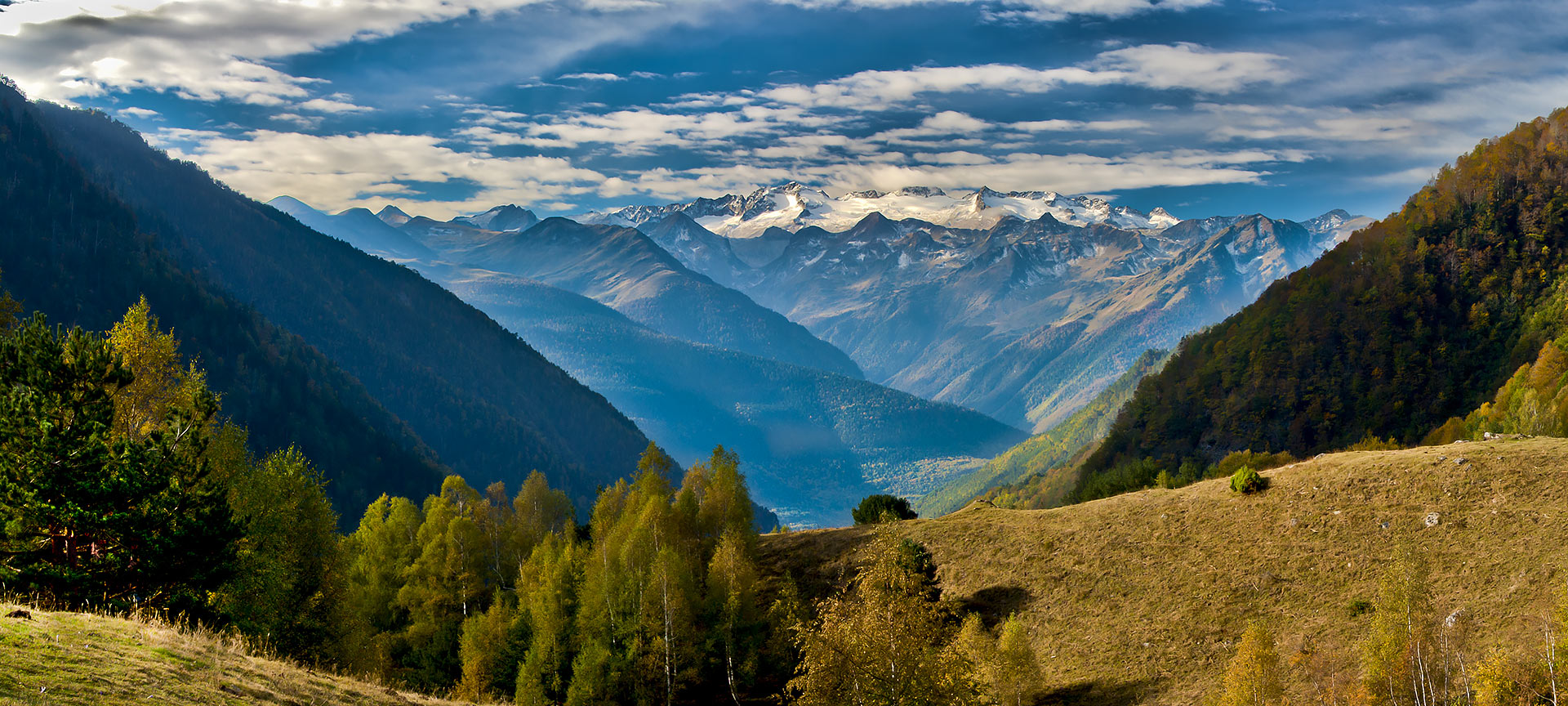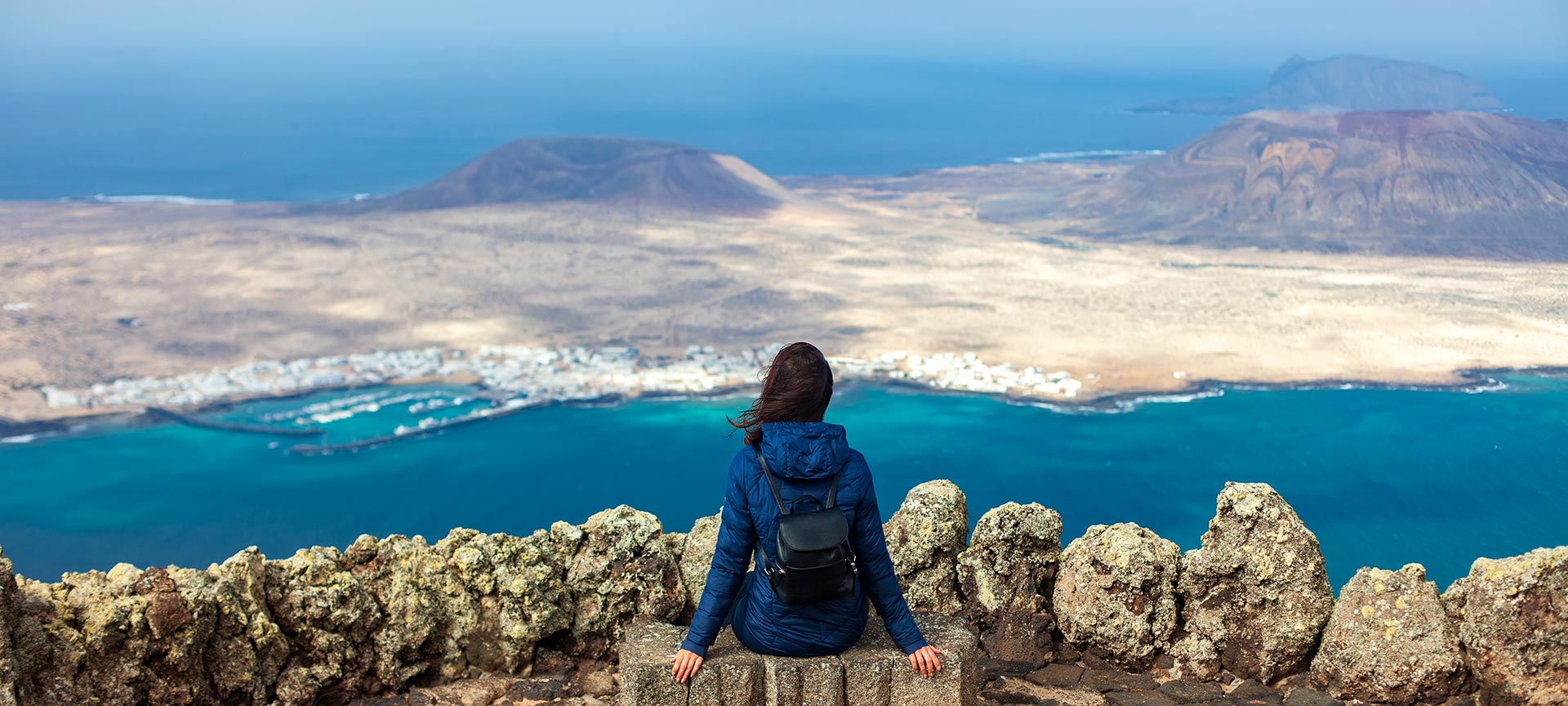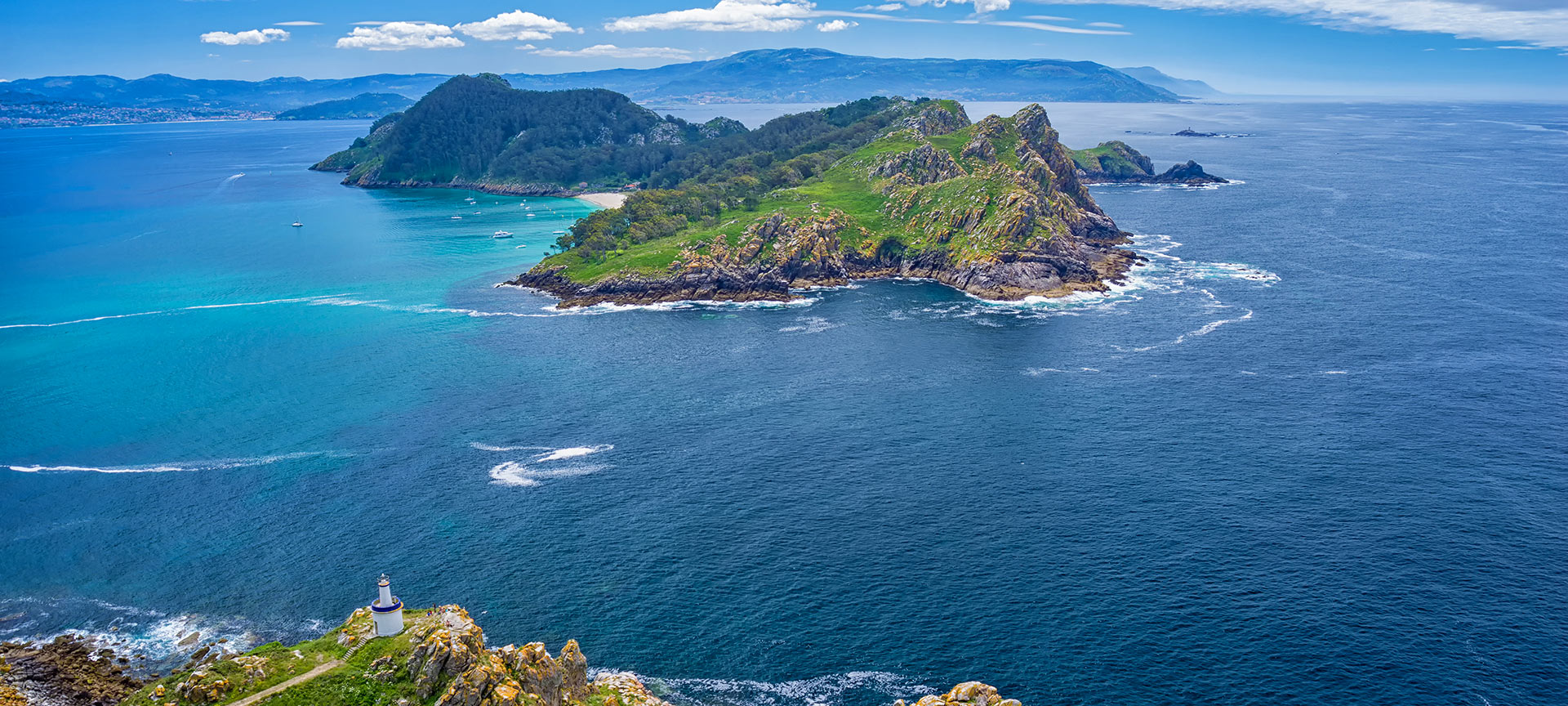Castilla y León
The Pozo de los Humos, in the province of Salamanca, is part of the Arribes del Duero nature reserve. The towns of Masueco and Pereña de la Ribera share this surprising waterfall, which forms the Uces river. The water falls from 50 metres high creating a vapour cloud that looks like smoke. There are two short and simple hiking routes to get there from both villages.The Salto del Nervión, on the border ofÁlavaand Burgos, is part of the Sierra de Orduña natural park. To see this 270-metre-high waterfall up close—it’s one of the tallest and most beautiful in Western Europe—there is a specially designed viewpoint that looks over the large cliff. It is accessible by car up to the former refuge and from there it is only two kilometres walking.
